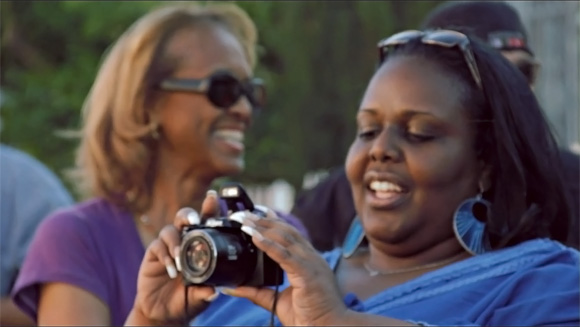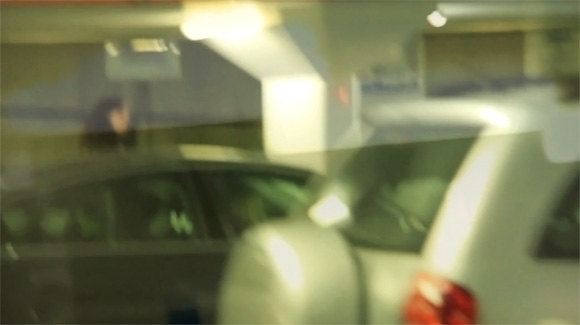Artist Michael Heizer’s enormous new work on the grounds of the Los Angeles County Museum of Art required a 340-ton boulder as its centerpiece. The boulder had to be transported over 100 miles from its quarry. At first, I was very interested in this rock. It’s huge! But soon I became more interested in the city’s reaction to the rock. So this film documents the final few miles of the rock’s journey, but it also documents the people who came out to be a part of the great Los Angeles rock transport. The film is part documentary and part personal impression. The simple fact of the matter is that the rock’s arrival is an unusual milestone in the life of this city. You can tell that simply by looking at the faces in my film.
Tag Archives: Film
Trauma: A Video Poem Triptych by Swoon
Swoon is a Belgian poet filmmaker who makes films that try to blur the boundary between written poem and moving image. He mixes his own footage with found footage and sometimes mixes his own words with others. I like the quiet easy tone of his work. I like his manipulation of imagery. His work is a very difficult kind of work because it tries to make something new from two different things. Poetry is a perfect form all by itself. But film is never satisfied. It’s always looking for something to include within it. So it’s natural for film to go looking for poetry and try to bring it in. But poetry resists all alliances. Poetry seems content and willing to wait for centuries. It requires nothing. It doesn’t care what film wants. It will sit on a dry page in some crowded shelf somewhere waiting six hundred years for just a single pair of eyes to come along in boredom, open to the page, glance in, read half-way down and then slap the book shut for another six hundred years until someone decides to finish reading the goddamn thing. That’s patience. Film doesn’t have that. Film must be seen now or it withers. It begins to rot. Even if it’s digital. Digital films become confused and get lost in the forest of other digits. They may never find their way out again. So working with the two things and trying to get them together is very difficult but may actually make perfect sense.
This is a film poem triptych that is Swoon’s first work to include his own words. There’s a site for the film with more information.
How Walt Disney Cartoons Are Made: 1939 Documentary Film
Here’s a wonderful glimpse into the animation techniques that were pioneering at the time of Disney’s first feature-length animation, ‘Snow White and the Seven Dwarfs.’ You get to see some shots of Snow White being drawn and photographed, sound effects being recorded, and people arriving at the premiere. You also get a good dose of the Disney sexism in which all women who work on a film are referred to as ‘pretty girls.’ It’s basically an advertisement for the film, but it’s a good one.
Elegìa: A Film by Fred. L’Epee and Dimitra Pouliopoulou
Filmmakers Fred L’Epee and Dimitra Pouliopoulou deal with the emotions of video. Their short films are visual poems in the most real sense. I like the way they flirt with the techniques of celluloid while remaining firmly anchored in video. The two things, rather than cancelling each other, work together to offer a filmmaker more tools for opening eyes and insisting that people fully observe. This kind of film dances between reality and abstraction. The ships are placed so that they traverse a line between light and dark, high and low, space and time.
Diary (2010): A Film by Tim Hetherington
Mature Content and War Footage:
This is a film by Tim Hetherington, the photojournalist who was killed yesterday in Libya. This film is his personal statement on being immersed in violence and trying to make some sense of it through the lens of journalism.
Digital Underground in the People’s Republic of China
Rachel Tejada shot and edited this film about independent and underground film in China. It was produced by dGenerate Films. It’s in six short parts and covers the basics of independent film festivals and efforts to make films that will somehow survive the oversight of the repressive government. I post this out of a measured interest, but I cannot overlook the depressingly passive sadness of everyone who so much as glances into the camera. They consistently refer to themselves as independent filmmakers or underground filmmakers. Underground they may be out of necessity, but they are most certainly not independent. They are comfortably passive and have an absolute zero level of confrontation or rebellion in them.
I cannot muster significant respect for billions of people who want to express themselves and flourish but do not ever make the decision to pick up their totalitarian government leaders and drown them in the sea. You can talk to me until you are blue in the face about your independent cinema, but until your cameras shoot something I’m not listening.
Parts 2 – 6 after the jump

